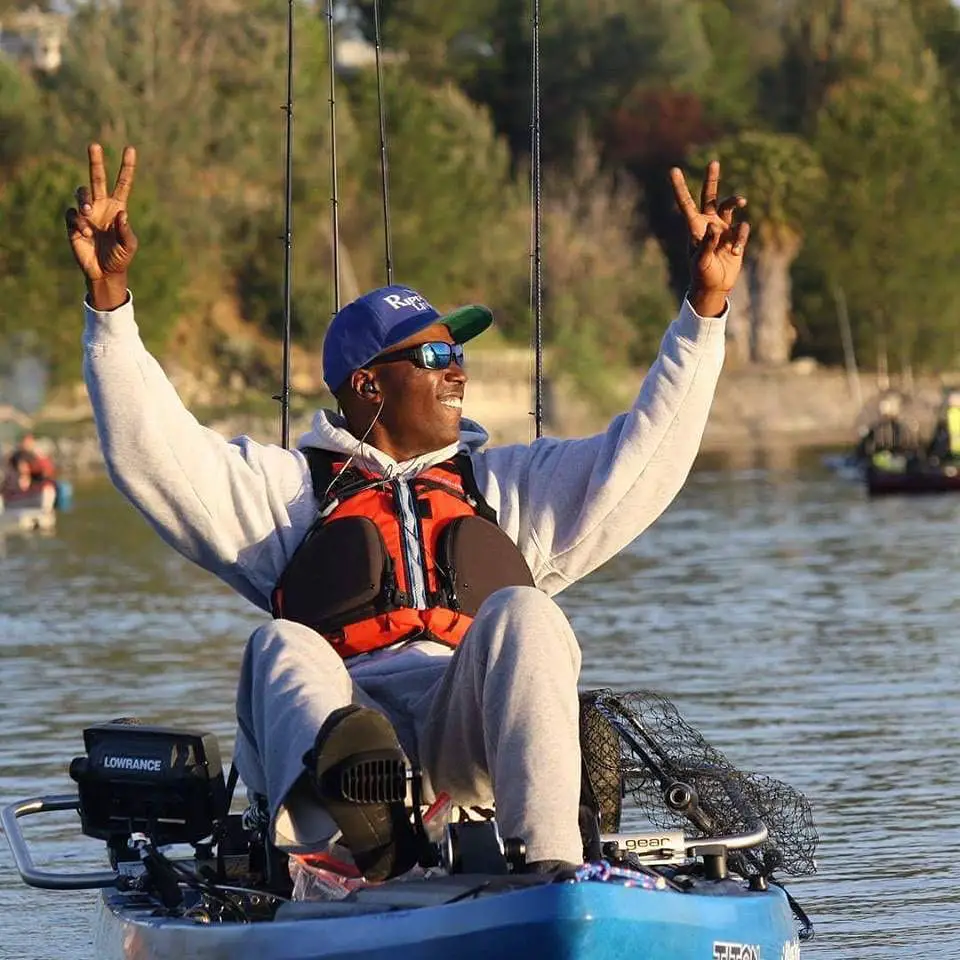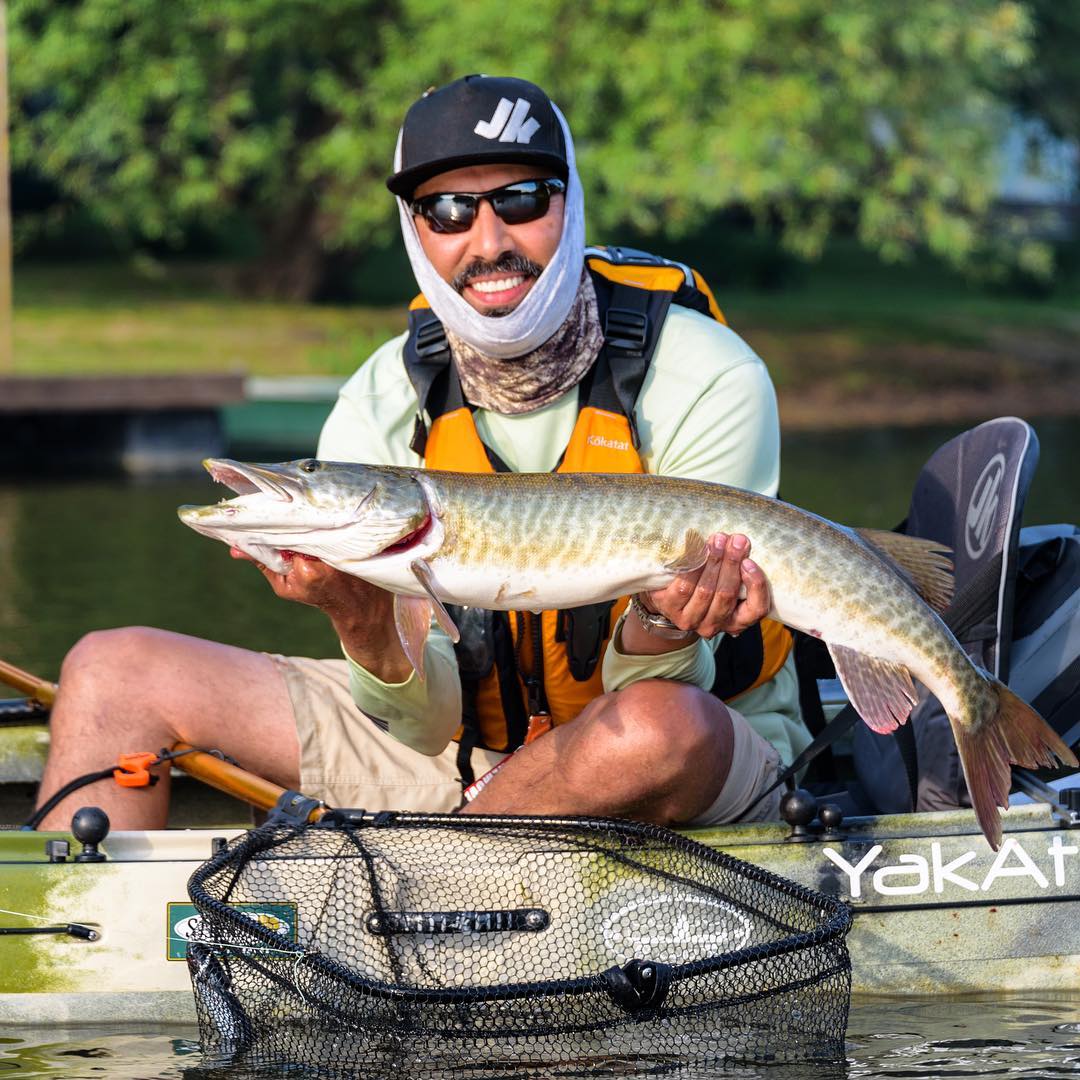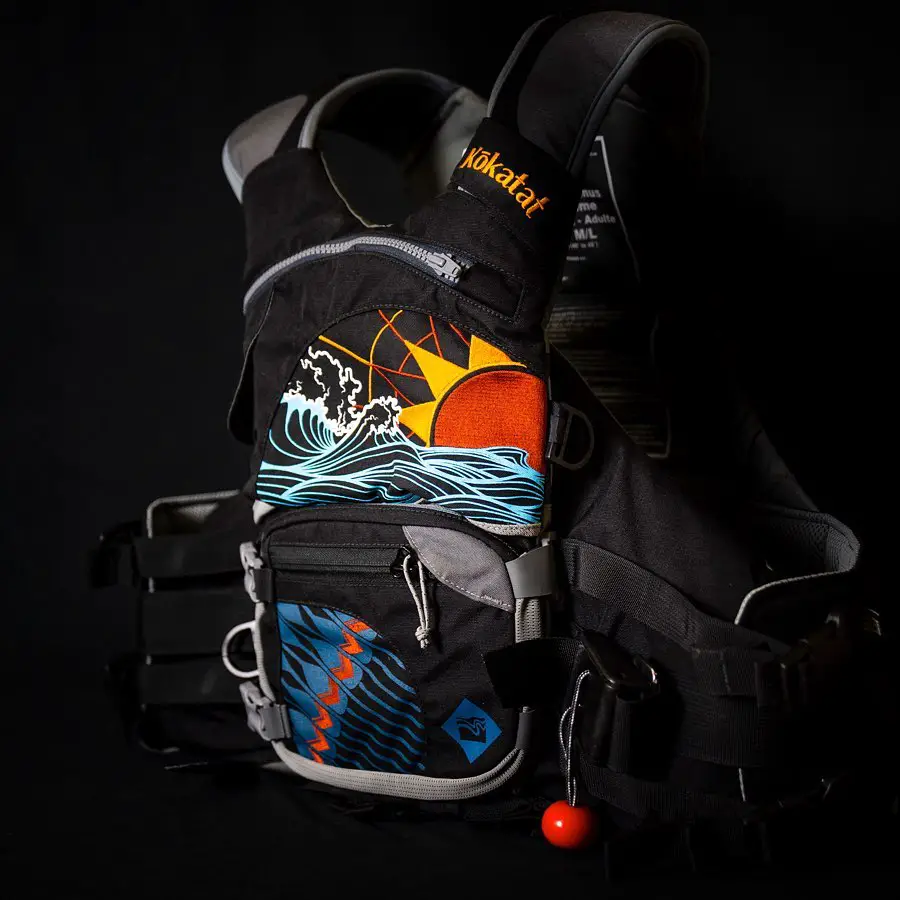Kayak fishing is an activity that asks a lot of its participants: balance, skill, coordination, and the ability to carry all the necessary equipment in easily accessible locations.
Personal flotation devices (PFDs) are safety equipment all kayakers, boaters, and anglers alike need when on the water. But not all PFDs are equal: the government has created standards by which PFDs are measured and regulations regarding when different types are required.
A kayak fisher does not have space to spare on their boat, and their clothing must allow for free range of motion and comfort. Kayak fishing PFDs must provide the buoyancy needed in a life jacket while working with, not against, the angler as they navigate the kayak and cast their lines.
We have created a list of our favorite kayak fishing PFDs, each of the following four standing out from the competition. Purchasing any of our suggested products will make you the owner of one of the best kayak fishing PFDs currently available.
Our Top Kayak Fishing PFD Picks

We will now describe each of the above PFDs in greater detail. If you are not sure what you are looking for in a PFD for kayak fishing, scroll down to the bottom, where we have written a quick guide on PFDs.
The 4 Best PFDs for Kayak Fishing
Here are the best PFDs you can buy for kayak fishing. Number four is actually a child’s life vest, but since many anglers want to share their love of the water with their kids, we thought it would be wise to review a great option for the smaller members of your family.
Note: USCG refers to the US Coast Guard rating. See our quick guide on kayak fishing PFDs at the end of this article to learn more about PFD ratings.
1 – Stohlquist Fisherman

The Stohlquist Fisherman is a durably-built PFD built for the angler who wants something big on storage and reliability. The shell is made from 500 denier Cordura, and the liner is 200 denier oxford. A selection of bright colors helps keep you visible, but it is also available in low-vis green.
This PFD has multiple zippered and velcro pockets, and there are external D-rings and elastic loops for a variety of gear. The large pockets can even be folded out to provide a work surface for assembling your tackle.
The large pockets may turn off Non-fishing kayakers, but since kayak fishing requires innovative use of space and an excellent range of motion, this vest is the ideal choice for the paddling angler. The convenient adjustable straps and breathable back add further versatility.
Specs:
- USCG Type III
- Buoyancy of 16.25 lbs
- Non-Inflatable Foam-Based
2 – NRS Chinook

The NRS Chinook offers intelligently-designed storage compartmentalization. Not only is there lots of storage, but you will also have a seemingly endless number of different ways to arrange your gear.
This vest has some excellent fishing-specific storage add-ons, such as a rod holder, pliers holder, and fly patch. The exterior has D-rings in multiple places, and one of the smaller pockets has an integral keyring, so you will not lose your keys.
The lack of reflective strips makes this vest harder to see in the water, which is a drawback from a safety perspective. When the NRS Chinook is compared to other PFDs, it appears more stylish and muted, so a more fashion-conscious buyer may prefer this style.
If you already have an organized manner in which you store your gear, all the different pockets on this vest may not matter to you. But those kayakers with limited space on their vessel will appreciate having all their essentials close to them and organized.
Specs:
- USCG Type III
- Buoyancy of 16.5 lbs
- Non-Inflatable Foam-Based
3 – Kokatat Bahia Tour

The Kokatat Bahia Tour features bright coloring and reflective strips and looks more like a safety vest than a fishing vest. Remote anglers may find this particularly attractive.
The Bahia Tour offers many different storage options, including a rod holder, multiple large pockets, and lash tabs. The large pockets are expandable, meaning that when empty, they take up little space but can hold considerably more gear than you would think upon first glance.
The designers of the Kokatat have put a lot of thought into comfort. The mesh back provides breathability, and the shoulders are padded with neoprene for all-day wearing ease.
Specs:
- USCG Type III
- Buoyancy of 16.5 lbs
- Non-Inflatable Foam-Based
4 – For the Kids: Stearns Child Watersport

The Stearns Child Watersport is not actually a fishing PFD: it does not have the storage options of any of the other vests mentioned in this article. However, it is an excellent choice for kids who are along for the ride but not in charge of tackle storage.
This PFD is very comfortable, and the large arm openings provide an excellent range of motion. This is important in a child’s PFD since you do not want to give the kids reasons to remove their life vests.
The construction is durable, and three straps are used to keep the PFD fitting snug on your child. Older and larger children may be too big for the close-sided design, but this is a great choice if your kid is between 30-40 lbs.
Specs:
- USCG Type III
- Buoyancy of 15.5 lbs
- Non-Inflatable Foam-Based
The Kayak Fisher’s Guide to PFDs
Anyone paddling a kayak has likely had the experience of tipping. When they first learn to kayak, many people spend more time out of the boat than in it.
While experienced anglers may stay dry for an entire outing, everyone needs to be prepared for an unexpected trip into the water. In a boat the size of a kayak, the PFD you choose must also be worn at all times.
The PFD requirement to be worn all the time and the physical activity required to paddle and fish from a kayak places unique restrictions on the vest. It must be buoyant enough to be of use but not so bulky and uncomfortable that the angler is tempted to remove it mid-excursion.
Below we will discuss some terms related to personal flotation devices so that you can make an educated purchase for your unique needs.
Foam versus Inflatable

Flotation technology has advanced significantly in recent years. There is a demand for lightweight, slim PFDs that are not uncomfortable, and manufacturers have made great strides in creating PFDs that do not feel like safety vests.
There are two types of flotation technology in PFDs: foam or inflatable. Foam broadly refers to material that contains many small pockets of air that provide buoyancy. Inflatable vests have gas bladders that, upon getting wet, are filled from an attached pressurized gas cylinder.
Foam PFDs are simpler to use and require less maintenance. There is no delay in buoyancy: they float immediately upon hitting the water. However, the foam adds bulk and takes away from potential storage space.
Inflatable PFDs require regular inspection to make sure they have a pressurized cylinder (typically a CO2 cartridge), and if the unit has been inflated, a new cylinder will be required. They are less bulky during normal use but can lose buoyancy from being pierced.
Inflatable PFDs will require greater care and attention. If you want a PFD that you can throw in your car or tackle box and forget about, this may not be the best choice.
You may have noticed that all of the four PFDs we recommended above are foam-based, non-inflatable. While inflatable PFDs are cool, the simplicity and instant buoyancy provided by a foam PFD make the most sense for kayak fishing.
Buoyancy

Buoyancy refers to the ability of a PFD to float and is measured in terms of weight. When you hear that a PFD has a buoyancy rating of 15 pounds, that means it provides an upwards force of 15 pounds when in water.
Higher buoyancy means a more remarkable ability to keep you afloat. Kayak fishing PFDs do not have as much buoyancy as a PFD that may be found for emergencies on a commercial vessel as an emergency PFD is intended for those who may be unconscious or unable to swim.
Fit, Form, and Storage

PFDs for recreational activities like fishing and kayaking are frequently designed to incorporate storage. Many kayak fishing PFDs can replace the traditional fishing vest as they have enough pockets.
What you need for storage from your PFD will depend on your kayak and fishing setup. If your boat has ample storage or you do not plan on carrying many supplies, pockets may not matter to you.
You should put some thought into what you keep in your tackle box, what is on your boat, and what is in the PFDs pockets. If you fall into the water and become separated from your kayak, you will want essential survival items in the PFD, so they stay with you.
Durable construction is important. Consider looking for ripstop nylon, especially with all of the sharp tools involved in fishing. Attachment points for external gear and adjustment points for comfort should all be assessed for your own needs.
Finally, you want a PFD that is comfortable. The back panel and armholes need to be suitable for your climate and kayak. Seat backs and your specific kayak seat shape will play a role in what front pockets and lower back design you choose, especially if you have a high back seat.
US Coast Guard Certification
Personal flotation devices are regulated by the US Coast Guard and rated for different activities.
You may be familiar with the Type system for PFDs. The Type system rated PFDs as Type I, II, III, IV, and V. The Types referred to different intended purposes and are summarized below:
- Type I: Off-Shore Use
- Type II: Near-Shore Use
- Type III: Flotation Aid
- Type IV: Throwable Flotation Aid
- Type V: Special Purpose
Type III and Type V PFDs are suitable for kayak fishing as they offer the necessary protection without the added bulk of the other types.
Recently, the US Coast Guard adopted new labels for these devices. While explaining each of the new symbols is beyond the scope of this article, the new system is designed to be easier to read, and pictures help explain what activities are permitted or prohibited for the PFD.
Regardless of what kind of kayaking PFD you purchase, make sure that it is US Coast Guard certified and labeled. If you are buying something that does not have the label, the PFD may not be a true lifesaving device.
Summary
We trust that you have enjoyed learning about kayak fishing PFDs. There are many options on the market, but we wanted to keep the list short and focused so you can quickly make a great choice and enjoy your watersports.
Accessorizing is important for outdoor recreation; having the right tools can make the difference between a carefree or stressful outing. Safety matters, too, especially when boating, so choices for best kayak fishing PFDs show you that you can have both in the same package.
